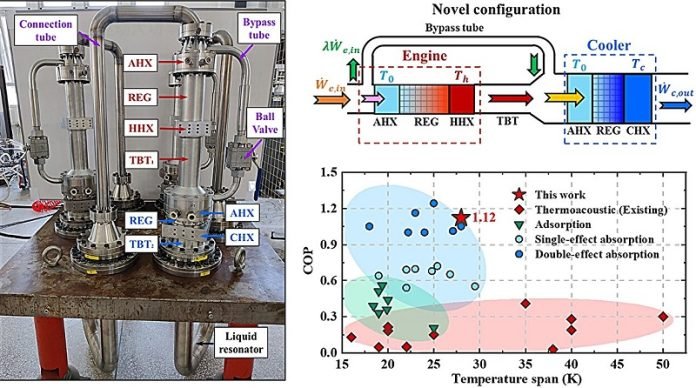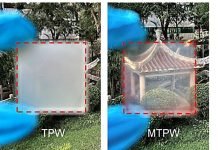
In the world of cooling technologies, something exciting is brewing, thanks to a team led by Prof. Luo Ercang from the Technical Institute of Physics and Chemistry of the Chinese Academy of Sciences.
They’ve come up with a new kind of refrigerator that could change how we keep things cool.
This isn’t your ordinary fridge.
Called a heat-driven thermoacoustic refrigerator (HDTR), it’s powered by heat instead of electricity. Yes, you heard that right—heat! It’s like using fire to make ice.
The best part?
It’s eco-friendly, using harmless gases like helium and nitrogen instead of harmful chemicals.
However, there was a hitch. Despite its cool (pun intended) concept, this technology wasn’t as efficient as it could be.
This efficiency is measured by something called the coefficient of performance (COP), which is a fancy way of saying how much cooling power you get for the amount of heat you put in.
The higher the COP, the better. But, when they cranked up the heat, the COP actually went down because of a tricky problem with matching the system’s temperatures just right.
But the team didn’t give up. They came up with a clever solution—a bypass system that lets some of the sound waves (yes, it uses sound waves to cool) skip a step, balancing the power between the heat engine and the cooler. It’s like finding a shortcut that gets you to your destination faster and with less fuel.
With this tweak, the fridge’s efficiency skyrocketed. They built a prototype that could cool with a COP of 1.12, which might not sound like much, but it’s 2.7 times better than the best of its predecessors.
Imagine a fridge that can cool things down to 7°C (44.6°F) when it’s a toasty 450°C (842°F) with just a whisper of sound and a puff of hot air. That’s what they achieved.
This new HDTR technology is not just a small step; it’s a giant leap in the cooling game. It outshines other cooling methods like adsorption (a type of cooling that uses solid materials to gather gas or liquid) and even comes close to beating double-effect absorption refrigerators, which are among the top performers in the world of chillers.
The team didn’t stop with helium; they also tried nitrogen, a gas that’s more common and cheaper, making the whole thing more practical and environmentally friendly.
They even hinted that by turning up the heat even more (above 800°C or 1472°F), they could double the efficiency, reaching a COP of 2.
Looking ahead, the researchers are planning to tweak their design to make it even better. They believe that soon, this heat-driven wonder could outperform many existing cooling technologies, making it a game-changer for air conditioning and beyond.
In a nutshell, this breakthrough is about turning heat into cold in the most efficient and eco-friendly way possible. It’s a cool twist on the traditional fridge, promising a future where keeping cool won’t cost the Earth.
Source: Chinese Academy of Sciences.




